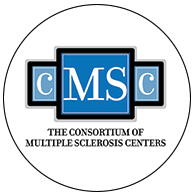A 60-year longitudinal multiple sclerosis (MS) study in a Norwegian cohort analyzing life expectancy, survival and mortality concluded that MS patients live shorter lives and have higher mortality than the general population.
The report, “Survival and cause of death in multiple sclerosis: a 60-year longitudinal population study,” appeared in the Journal of Neurology, Neurosurgery & Psychiatry.
Survival rates for those with MS have increased since the analysis began in 1953, as have rates among everyone else — making researchers wonder whether the gap in survival between MS and the general population has changed over time.
In general, people with MS live seven to 14 years less than others. Among MS patients, women have higher mortality rates than men, though their disease progression is slower and their life expectancy is longer. Furthermore, patients with primary progressive multiple sclerosis (PPMS) — about 10 percent of all MS patients — have higher mortality than patients with the relapsing-remitting form of the disease (RRMS), which is initially diagnosed in about 85 percent of patients.
With 160 cases of MS per 100,000 inhabitants, Norway ranks seventh in MS disease prevalence worldwide, behind only Canada, Denmark, Sweden, Hungary, Cyprus and the United Kingdom, according to the Multiple Sclerosis International Federation.
Researchers led by Hanne-Marie Bøe Lunde, MD, a neurologist at the Norwegian Multiple Sclerosis Competence Centre in Bergen, studied not only mortality rates but also causes of death — which is an important indicator of differences in nature and magnitude of underlying diseases in MS compared to the general population.
The study included 1,388 patients (533 men and 855 women) who developed MS from 1953 to 2012 in western Norway’s Hordaland County. Survival was estimated from birth and from disease onset after adjustment for sex, age and disease course.
Results showed that 291 patients died, mainly of MS (56.4%). Median life expectancy was lower for MS patients (74.7 years) than for the general population (81.8 years), as well as lower for men (72.2 years) than for women with MS (77.2 years). Moreover, median survival from MS onset (40.6 years) was lower compared to the general population (54.6 years).
Furthermore, life expectancy for RRMS patients was longer (77.8 years) than for those with PPMS (71.4 years). Not surprisingly, MS patients had higher mortality rates than the general population. Moreover, women and PPMS patients showed greater mortality rate than men and RRMS patients.
Yet mortality decreased over the course of the study, as patients with MS onset from 1997 to 2012 showed lower rates than those who fell sick from 1953 to 1974. However, patients diagnosed in the most recent period were in their early adulthood, which could introduce bias in the results. Conversely, patients younger than 20 years of age at disease onset or diagnosis showed greater mortality than those above 60 years. No differences in cause-specific deaths were found.
The study’s long duration is its main strength, increasing the data’s validity. Conversely, its limitations include the limited number of participants, the lack of information on lifestyle factors and comorbidities, and potential discrepancies in criteria of cause-of-death diagnosis.
The results match other studies in increased mortality in MS, sex differences in MS mortality, greater risk for younger patients and better prognosis for RRMS over PPMS.
Interestingly, survival from disease onset was “more than twice as long as reported in the first study on the topic in 1969,” according to the study. This shows a strong increase over time that may result from multiple factors including better treatments, improved diagnostic tools and diagnostic criteria, socioeconomic development and lifestyle changes.










